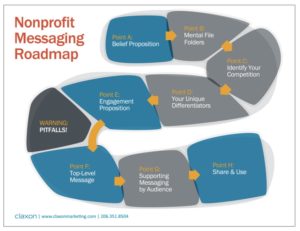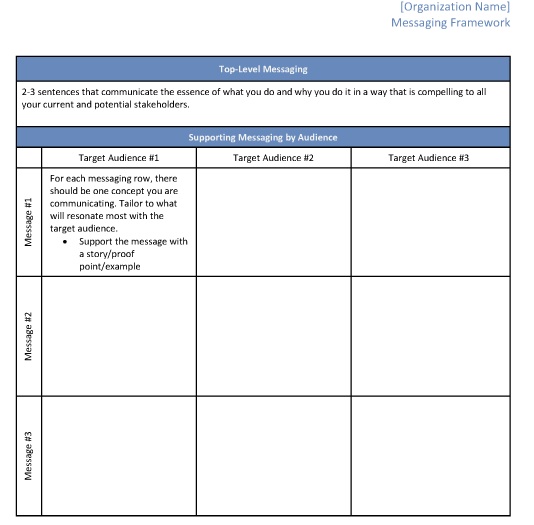 Bootcamp Week #8: Supporting Messages by Audience
Bootcamp Week #8: Supporting Messages by Audience
(this week’s vid)
What’s the difference between ‘advanced’ and ‘fluent’ when it comes to speaking a language? Your ability to calibrate to different audiences and settings.
For instance, it’s one thing to tell your colleagues that you tried the latest spot from the MSG150 food blog. It’s quite another to relay that same information to a chef from Le Cordon Bleu.
It’s about your audience and what matters most to them. That’s why it’s important to come up with your top three target audiences (the groups of people who are most important to the success of your organization) and know what they care about. Really, truly care about.
If you’re the Seattle Aquarium, visitors, volunteers and donors are all extremely important to you. But what they need to hear in order to engage differs dramatically.
This Week’s To-Do’s
- Download the Nonprofit Messaging Framework template.
- Brainstorm a list of target audiences.
- Narrow that list to your top three.
- Write a short paragraph describing what matters most to each target audience.
- Create two to four messages for each audience.
- Put proof points and stories for each supporting message that will motivate them to take action to take action!
Next Week
Sharing and using your Messaging Framework.
About Claxon’s Nonprofit Messaging Bootcamp
This is week #6 of our Nonprofit Messaging Bootcamp. If you’re just joining the Bootcamp, here’s what you need to do to get started.
- Download the Nonprofit Messaging Roadmap,
- Sign up for our free Tune-Up Tuesday videos,
- Read and complete the messaging to-do’s for the previous weeks: Week #1, Week #2, Week #3, Week #4, Week #5, Week #6, and Week #7!


